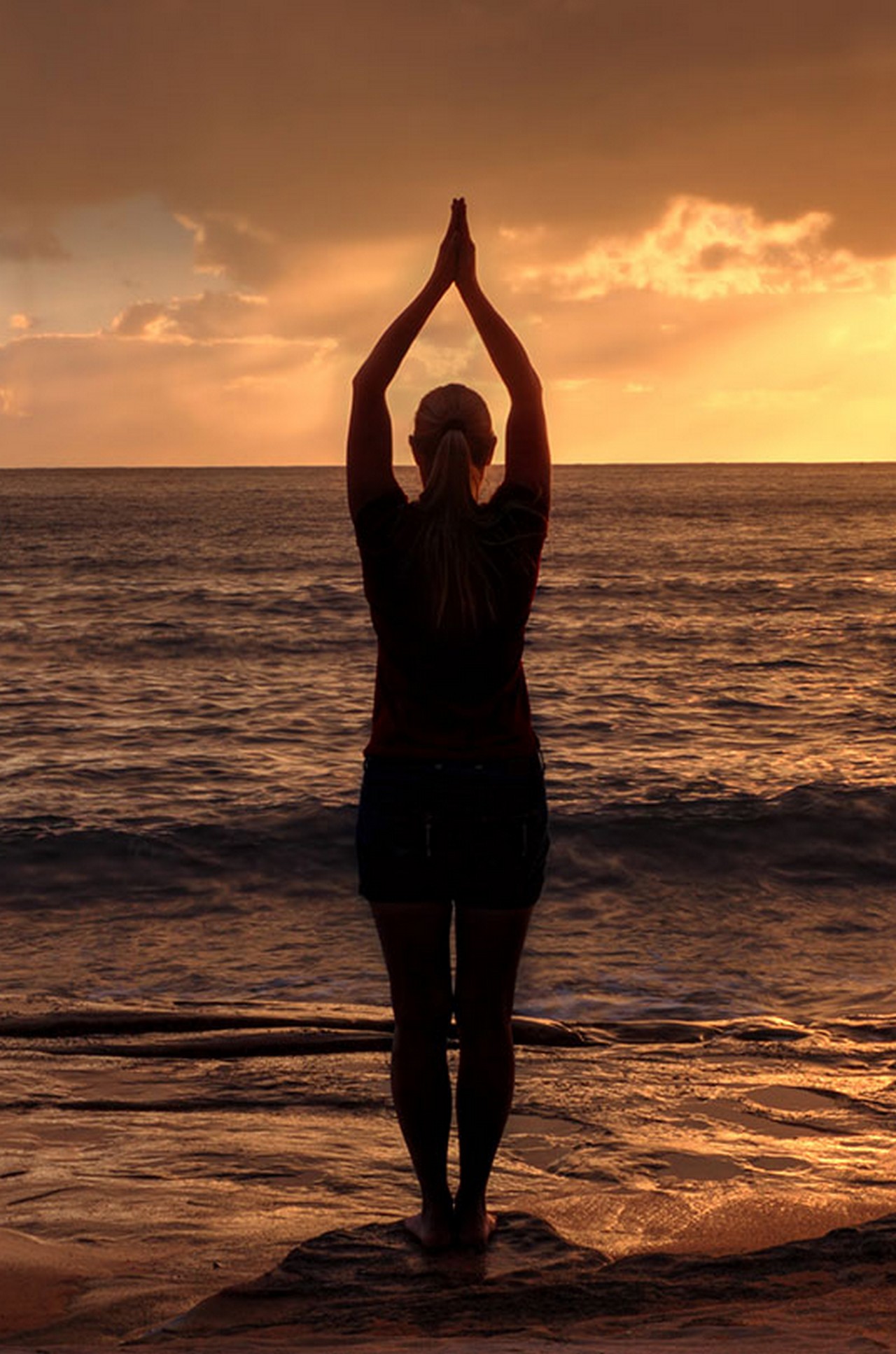
Sanskrit: ताडासन; Tada – Mountain, Asana – Posture; Pronounced: As- tah-DAHS-anna
The Tadasana yoga pose, also known as Samasthiti or mountain pose, acts as the foundation for all other standing yoga postures. It strengthens your ankles, thighs, knees, and back. You can perform this pose at any time of the day, even when your stomach is not empty. Eager to get started? Well, this article discusses the details of Tadasana, how to practice it, its benefits, and precautions to take. Take a look!
In This Article
Everything You Need To Know About The Tadasana
- What You Should Know Before You Do The Tadasana
- How To Do The Tadasana
- Precautions And Contraindications
- Beginner’s Tip
- Advanced Pose Variation
- The Benefits Of Mountain Pose
- The Science Behind The Tadasana
- Preparatory Poses
- Follow-Up Poses
What You Should Know Before You Do The Tadasana
This asana can be practiced any time of the day.
It is not mandatory that this asana must be done on an empty stomach. But if you are preceding or following it up with yoga asanas, it is best to have your meals at least four to six hours before you do this asana. Also, make sure that your bowels are clean.
StyleCraze TriviaTadasana forms the base of all standing asanas in modern yoga. Still, it was not officially included as an asana in Hatha yoga until the 1966 book “Light on Yoga: Yoga Dipika.”
Level: Basic
Style: Hatha Yoga
Duration: 10 – 20 seconds
Repetition: 10 times
Invokes: The whole body
Strengthens: Knees, Thighs, Ankles, Back
How To Do The Tadasana (Mountain Pose)
- Stand erect and join the feet together, with the toes touching each other. The heels may be just slightly apart, and your hands must be firmly be placed alongside your body.
- You must make your thigh muscles firm. Lift your kneecaps while ensuring you do not harden the lower part of your belly.
- Strengthen the inner arches of your inner ankles as you lift them.
- Now, imagine a stream of white light (energy) passing through your ankles, up to your inner thighs, groin, spine, neck, all the way up to your head. Gently turn your upper thighs inward. Elongate the tailbone such that it is towards the floor. Lift the pubis such that it is closer to the navel.
- Look in line with the horizon.
- Breathe in and stretch your shoulders, arms, and chest upwards.
- Feel the stretch in your body right from your feet to your head. Hold the pose for a few seconds. Then, exhale and release.
Precautions And Contraindications
Shutterstock
It is best to avoid this asana if you have the following problems:
1. Headaches
2. Insomnia
3. Low blood pressure
Related: 15 Simple & Natural Ways To Lower Your Blood Pressure At HomeStyleCraze SaysAlthough Tadasana is a basic pose, holding it for too long has been reported to cause dizziness in many people. Hold your breath and feel the stretch for about 10 seconds, not more.
Beginner’s Tip
As a beginner, you might find it difficult to balance in this pose. To improve your balance, place your inner feet about three to five inches apart until you get comfortable in the pose.
Advanced Pose Variation
Shutterstock
You could use your arms to deepen the stretch in the following ways:
- Extend your arms upwards so that they are perpendicular to the floor and parallel to each other, making sure your palms are facing each other.
- Alternatively, interlace your fingers, and stretch your arms upwards.
- You can also cross your arms behind your back such that each palm holds the opposite elbow. If you do this, repeat the pose by interchanging your hands.
The Benefits Of Tadasana (Mountain Pose)
Shutterstock
These are some amazing benefits of the Tadasana:
- This asana helps improve body posture.
- With regular practice of this asana, your knees, thighs, and ankles become stronger.
- Your buttocks and abdomen get toned.
- This asana reduces flat feet.
- It also makes your spine more agile.
- It is an excellent asana for those who want to increase their height in their formative years.
- It also helps improve balance.
- Your digestive, nervous, and respiratory systems are regulated.
Related: 14 Home Remedies For Digestive Problems And Prevention Tips
The Science Behind The Tadasana
Shutterstock
They say that if there was ever a blueprint pose, it was the Tadasana. This asana works on your muscles so that your posture is not only better, but also pain-free while you are at your sedentary desk job. It works to align your skeleton and bring it back to a neutral stance. When this happens, your body comes in to the start point for all the other asanas to follow.
However easy this might sound, owing to our excessive smartphone usage and unhealthy sitting postures at work, there is always a tight muscle or an alignment amiss. This asana corrects them all. It is the muscular effort that it takes to get into this asana that helps strengthen the core and straighten rounded, weak backs.
Related: 10 Core Exercises For Seniors To Improve Their Stability
Preparatory Poses
Adho Mukha Svanasana
Uttanasana
Follow-Up Poses
Standing Poses
This asana, if taught in the right way, enables you to understand how much effort is required at which point to come to that neutral position before you get into the more complicated asanas. If you get this right, it will be quicker and easier to take on the more challenging poses.
All other standing yoga postures are built based on Tadasana, also known as Samasthiti or mountain stance. It asana is suitable for all times of the day. While you are at your sedentary desk job, Tadasana yoga works on your muscles to improve your posture and keep you pain-free. It also helps to align your skeleton and return it to a neutral position. Your body becomes the starting point for all subsequent asanas when this happens. It is preferable to eat at least four to six hours before performing this asana.














